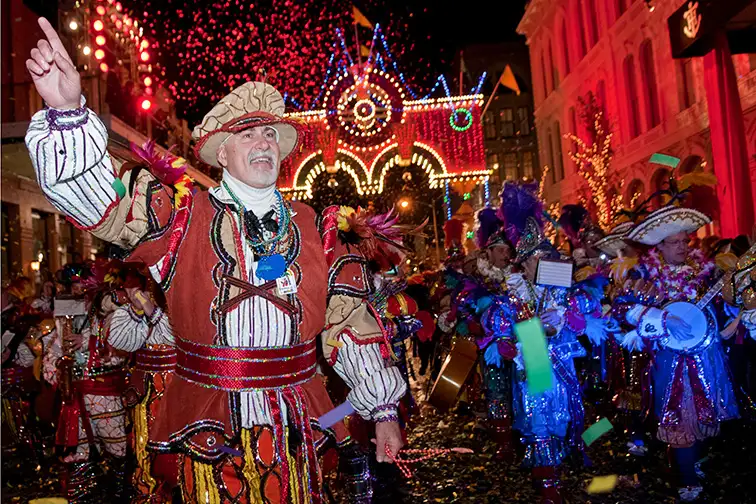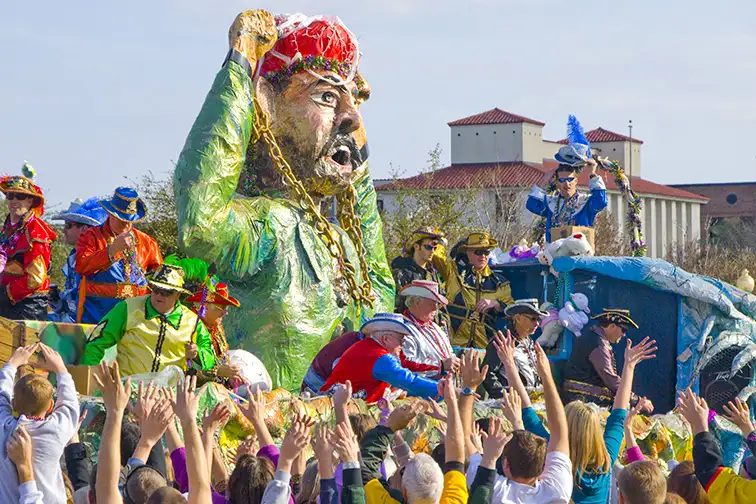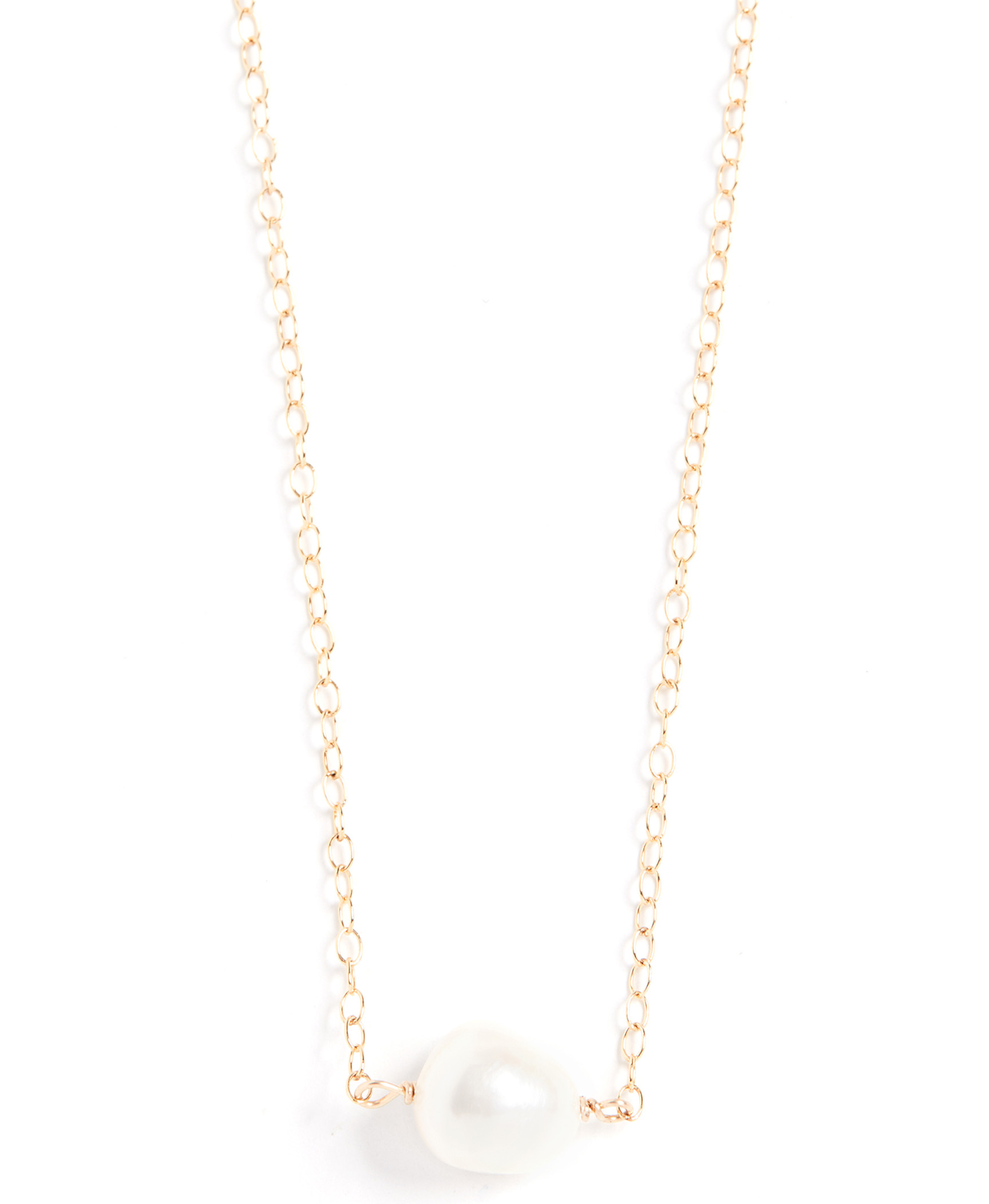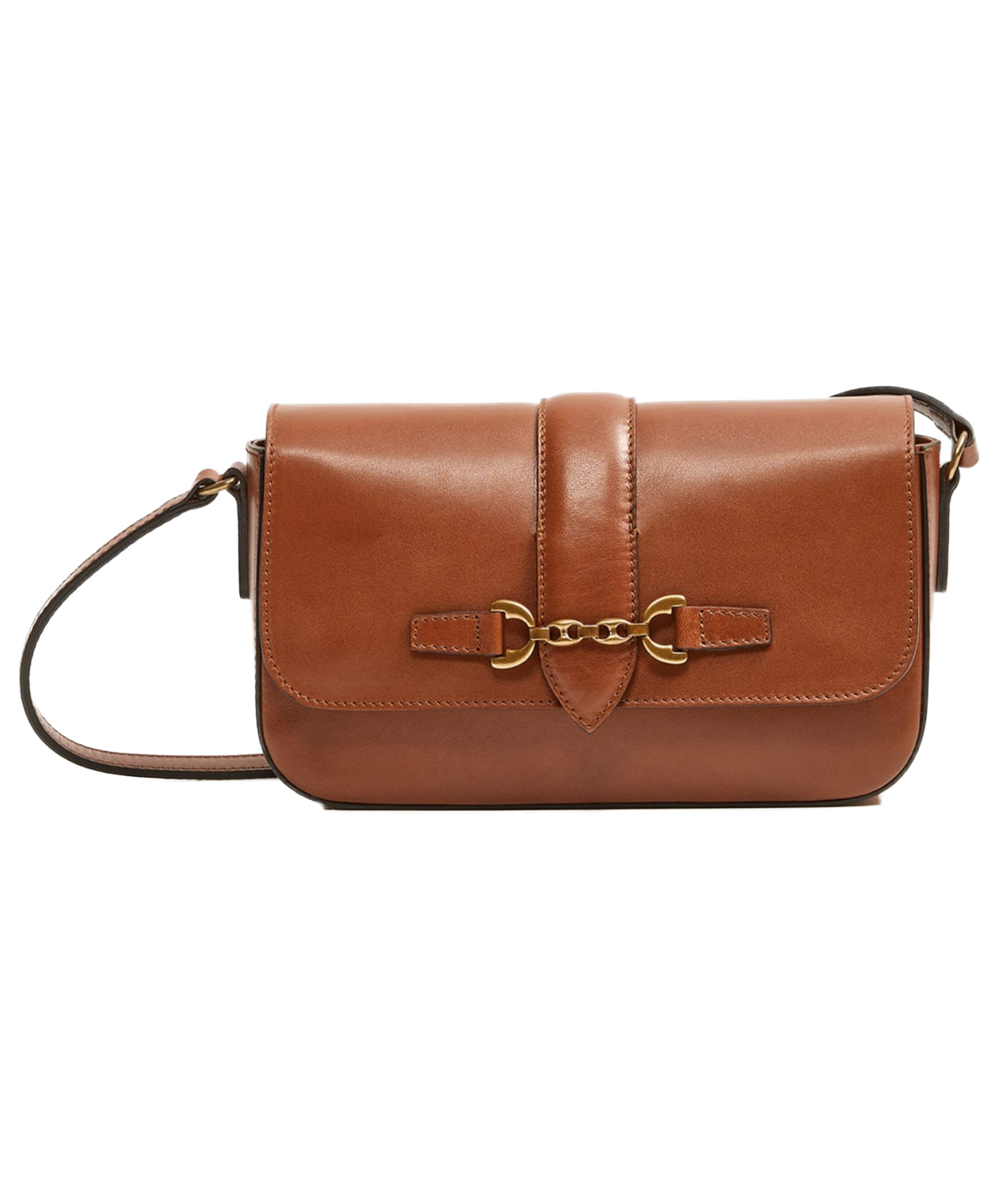Mardi Gras often gets a bad rap, perceived as an adult-oriented festival that no sane parent would ever allow their children to attend. While most winter carnival events include raucous parties, Mardi Gras can be celebrated with family-specific offerings, such as parades and historic museums, in New Orleans, Louisiana and across the U.S. These are the best places to enjoy Mardi Gras with kids.
1. Lake Charles, Louisiana
Unusual in the sometimes-secret world of Mardi Gras societies, Lake Charles is the only place in Louisiana where the public is invited to see the elaborate costumes of the royal courts at two separate events, on Twelfth Night, usually held in early January, and at the Royal Gala, held the evening before Mardi Gras begins. The Gala features the krewes royally promenading before thousands of residents and visitors at the Lake Charles Civic Center Coliseum.
Families love that there’s an entire day dedicated to just children and family activities. Children’s Day, the Sunday before Mardi Gras, includes performing arts programs, technology and science exhibits and arts and crafts. Kids can also be photographed in costumes provided by the Mardi Gras Museum of Imperial Calcasieu. Plus, they’ll receive free souvenirs! In the afternoon, the Children’s Parade is a not-to-miss highlight, with colorful floats, throws and themes.
Traditions: The Mardi Gras Museum of Imperial Calcasieu contains the largest collection of Mardi Gras costumes in the world, and the Royal Gala held on Lundi Gras (the Monday before Mardi Gras) is the only event in the state that allows the public to see the Krewes’ Royal Courts in costume. Lake Charles also has a parade on the lake, and a lighted boat parade on Lake Charles usually takes place the Sunday night before Mardi Gras.
Can’t-Miss Attractions: Check out the Mardi Gras Museum of Imperial Calcasieu (located in the Central School Arts & Humanities Center) to see how costumes have changed over the years of Lake Charles’ Mardi Gras. Kids love the animated mannequins that tell the story of Mardi Gras and the “float” exhibit, which makes everyone seem like a part of the action of a parade.
Recommended Hotel: Springhill Suites Lake Charles
2. New Orleans, Louisiana
If hitting The Big Easy for the biggest of celebrations, avoid Bourbon Street and head to St. Charles Avenue, where families set up camp for the day. You’ll actually see a lot of kids on ladders, in special seats bolted onto them; if you can get your hands on one (at local hardware stores), your child will be able to see the floats and you’ll know they’re out of harm’s way.
It can be difficult to decide which parades to attend over the course of the celebrations, but highlights include the Krewe of Barkus, a hilarious dog parade that takes place two Sundays prior to Fat Tuesday, with dogs dressed in costume being led through the streets of the French Quarter by their owners (this is the exception to avoiding the Quarter). The Sunday before Fat Tuesday, Thoth, one of the largest parades, heads down Magazine Street, and Bacchus, another popular parade begins later in the evening. On the big day, Fat Tuesday, Zulu, an African American krewe, leads the main parade and riders hand out coconuts, an enormously coveted honor. Consider purchasing grandstand seats on St. Charles Avenue if you want to ensure a spot and access to bathrooms!
Traditions: Because the first Rex parade honored a Russian prince, the New Orleans Mardi Gras adopted the colors of the royal house of Romanov: purple for justice, green for faith and gold for power. The trinkets and other goodies tossed from floats are called “throws.” Typically, these are beads, doubloons and plastic cups. However, depending on the parade and the generosity of the krewe, roses, stuffed animals, plastic toys and much more might be tossed. Also, if you get a little plastic baby (representing Jesus) in your piece of King Cake, you might just have to throw a party, as this is a customary tradition.
Can’t-Miss Attractions: Blaine Kern’s Mardi Gras World is a great way to understand what goes on behind the scenes of Mardi Gras. Opened in 1947 by world-renowned float designer and builder Blaine Kern, Mardi Gras World provides visitors with the chance to try on authentic costumes and tour enormous warehouses filled with floats. The guided tour includes a short video and a chance to see float artists at work. More than 80 percent of the floats in New Orleans during the Carnival season are designed and built there.
Recommended Hotel: New Orleans Marriott
3. Metairie, Louisiana
If you want to totally forgo New Orleans’ festivities, the annual Family Gras in Metairie (about 20 minutes away by car) is a wonderful alternative. Usually held two weekends before Mardi Gras, there are several free concerts, parades, kid-friendly activities, an art market and a food court during this three-day family festival.
Traditions: The term “Family Gras” was started here to give families a more calm atmosphere for kids to enjoy the festivities. Plus, it’s a free celebration, which makes it even more enticing for families to enjoy.
Can’t-Miss Attractions: Check out the nearby Louisiana Children’s Museum for some hands-on fun like climbing a rock wall. Or visit Carousel Gardens, a small amusement park with classic rides, within New Orleans City Park.
Recommended Hotel: BEST WESTERN PLUS Landmark Hotel & Suites
4. Mobile, Alabama
Over the course of Mobile’s official Mardi Gras season, dozens of different groups and societies stage parades with hundreds of floats throughout the downtown area, in addition to hosting several neighborhood parades. Some routes and parades are specifically for families, with bans on alcohol. Visitors should pick up a guide to plan which parades to attend.
Traditions: Instead of “krewes,” a term many people are familiar with and used in Louisiana Mardi Gras groups, parade organizations are called “Mystic Societies” in Mobile. Also, Moon Pies (tasty treats made of chocolate, graham cracker cookies and marshmallow) are a popular item thrown from floats in Mobile. Mobile’s Mardi Gras flag features only purple and gold colors. The colors of the flag stand for justice and power, respectively.
Can’t-Miss Attractions: The Mobile Carnival Museum has 14 gallery rooms where you can learn more about the history and traditions of Mobile’s celebration. Exhibits include past costumes of royal robes, crowns and scepters from various Mystic Societies, videos of parades and balls, a float you can climb on, and details about how costumes and floats are constructed.
Recommended Hotel: Hampton Inn & Suites Mobile-Downtown Historic District
5. Mississippi Gulf Coast
There are 12 beautiful, small towns along the Mississippi Gulf Coast that celebrate Mardi Gras in a variety of family-friendly traditions. The first (and only) Krewe to parade along Coastal Mississippi in 1908 had an impressive 17 floats. Today, there are more than 20 different parades, each with their own countless number of beautifully decorated floats.The Krewe of Barkloxi leads the annual Pow Wow Paw-Rade in Biloxi each year, which is definitely a four-legged favorite amongst families. But for the kids who want to be parade stars, there’s the annual children’s parade, with a different theme each year, for ages 12 and younger in downtown Biloxi.
Traditions: Paul’s Pastry in Picayune, Mississippi, bakes thousands of Mardi Gras King Cakes daily during Mardi Gras season. In the 1970s, Paul’s took a new spin on the King Cake by filling them with cream cheese and fruit and topping them with brightly colored Mardi Gras sugars. Locals continue to love the new, local tradition of the Mardi Gras King Cake.
Can’t-Miss Attractions: Biloxi, known for its seafood, is a great place to take a boat or fishing tour. Take a shrimping trip or a sunset boat ride on a Biloxi Schooner. Or catch a Biloxi Shuckers baseball game after enjoying one of the many parades.
Recommended Hotel: Beau Rivage Resort and Casino Biloxi
6. St. Louis, Missouri
Mardi Gras in the St. Louis neighborhood of Soulard is composed of a number of events, but the highlights for families probably are the Pet Parade (the Guinness Record holder for the largest parade of costumed animals); the Dachshund Derby, where the long dogs compete in three aged-based categories: Cocktail Weenies, Ballpark Franks, and Hot Dog; and the Grand Parade (the signature event of the season), with dozens of floats rolling along the 1.5-mile parade route.
Traditions: At the Soulard Grand Parade, which marched for the first time in 1980, more than 17 million beads fly from the parade route.
Can’t-Miss Attractions: The St. Louis Gateway Arch is, of course, the highlighted landmark in St. Louis as it’s the gateway to the west. It stands 630 feet tall so you really can’t miss it. Make sure to stop at Crown Candy Kitchen for lunch and enjoy a BLT or tamale.
Recommended Hotel: Drury Plaza Hotel at the Arch
7. Universal Studios Orlando
For a guaranteed family-friendly Mardi Gras, Universal Studios Orlando has the answer. From February through May, the theme park holds a number of events during its Mardi Gras Grand Celebration, from parades to concerts to a specialty “French Quarter Courtyard” with authentic New Orleans cuisine. It’s designed specifically to be family-friendly, including a special parade viewing area just for kids.
Traditions: A nice touch is that the parade floats are made by Blaine Kern, the same company that’s created Mardi Gras floats in New Orleans since 1947.
Can’t-Miss Attractions: The Wizarding World of Harry Potter–need we say more?!
Recommended Hotel: Universal’s Cabana Bay Beach Resort
8. Galveston, Texas
This is the largest Mardi Gras in Galveston, Texas (the third largest in the U.S.), with two dozen parades and a slew of events, but the one families shouldn’t miss is Family Gras. Held two Sundays before Mardi Gras, there’s live family entertainment, two parades, a kids’ coloring contest and a 1K fun run/walk. The following Sunday offers more favorites, with the Krewe of Barkus & Meoux Pet Parade and the Mardi Gras Children’s Parade.
Traditions: This island-style Mardi Gras offers sand beneath your toes as many of the parades flow down the beachfront area. The first recorded Mardi Gras celebration in Galveston was in 1867 and included Shakespearean performances.
Can’t-Miss Attractions: The Seawall, where you can catch some of the parades, runs 10 miles along the coastline. Beachgoers must cross over the seawall to reach the sand but the wall is also a fun art mural featuring aquatic scenes and landmarks of Galveston. Enjoy the views, walk, run or bike along the Seawall when you aren’t watching a Mardi Gras parade.
Recommended Hotel: Hampton Inn & Suites Galveston
9. Pensacola, Florida
Pensacola’s Mardi Gras organizers have made a concerted effort to provide a welcoming environment for families, with lots of kid-friendly events. Highlights include the Kids and Kritters Parade (with costumed kids and pets); the Grand Parade, held the Saturday before Fat Tuesday (with a children’s viewing area with kid-friendly food, face painting, and other family entertainment); and the Krewe of Wrecks Beach Parade (the Sunday before Mardi Gras), which boast 50 floats.
Traditions: Pensacola’s Mardi Gras dates back to 1874 and is now one of the most family-friendly Mardi Gras celebrations in the country.
Can’t-Miss Attractions: After watching the parades, head to Pensacola Beach for some sand and surf. It’s located on Santa Rosa Island and offers lifeguards. There’s a boardwalk with shops and restaurants and families can enjoy fishing or snorkeling there, too.
Recommended Hotel: Holiday Inn Resort Pensacola Beach
What to Pack for Your Next Trip
Our team of parents and travel experts chooses each product and service we recommend. Anything you purchase through links on our site may earn us a commission.




































